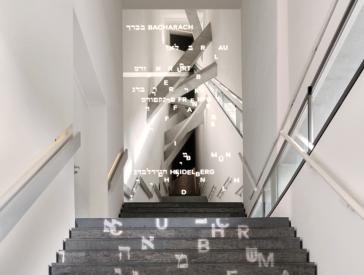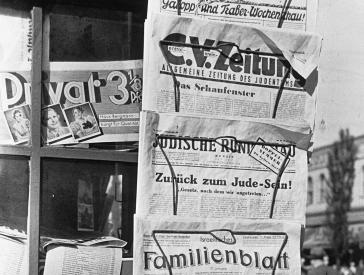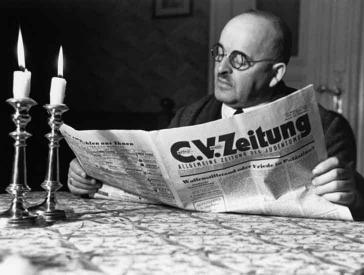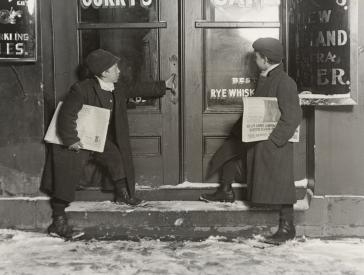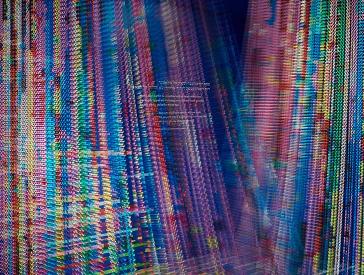Invitation to the press conference on 18 August 2020, 11 am
The new core exhibition in the Jewish Museum Berlin, Opening: 23 August 2020
Press Release, Wed 22 Jul 2020
On Sunday, 23 August 2020, the Jewish Museum Berlin is opening its new core exhibition in the Libeskind building after more than two and a half years of reconstruction. On 3,500 square meters (almost 38,000 square feet) of floor space, the museum will present the history of Jews in Germany from the Middle Ages to the present day, with new focuses and new scenography. The exhibition Jewish Life in Germany: Past and Present has been developed by a 20-person team at the Jewish Museum Berlin and designed and built by the Arbeitsgemeinschaft chezweitz GmbH/Hella Rolfes Architekten BDA. The previous core exhibition was on display from when the museum opened in 2001 until it closed in December 2017. It had more than 11 million visitors.
- Kontakt
-
Press office
T +49 (0)30 259 93 419
presse@jmberlin.de
- Address
Jewish Museum Berlin Foundation
Lindenstraße 9–14
10969 Berlin
Press Conference
| Date | 18 August 2020 |
| Accreditation and private view | from 9.30 am |
| Photo session with Minister of State for Culture and the Media Monika Grütters and Hetty Berg, Director of the Jewish Museum Berlin at the exhibition entrance, second floor | 10.30 am |
| Press conference begins (followed by curators’ tour) | 11 am |
| Please allow sufficient time for the security checks at the entrance. | |
Speakers at the Press Event
| Monika Grütters | Minister of State for Culture and the Media |
| Hetty Berg | Director of the Jewish Museum Berlin |
| Cilly Kugelmann | chief curator of the core exhibition, Jewish Museum Berlin |
| In the presence of selected artists, curators and designers of the exhibition. | |
Registration
To assist our planning, please confirm your participation by email (presse@jmberlin.de) or phone (T +49 (0)30 259 93 419) by Friday, 14 August 2020, at the latest. Please note that the number of participants is limited due to the applicable distance rules. We kindly ask you to wear a mouth-and-nose cover during the event and to observe the distance rules.
Please contact the press office for interview requests in advance.
The exhibition relates the history of Jews in Germany from the Middle Ages to the present day. Jewish communities have always been closely connected to their surroundings. Acceptance and exclusion are examined in the exhibition in their varied historical forms, spanning from neighborly coexistence to violence.
One focus is on the history after 1945: This includes dealing with the catastrophic break of the Holocaust and the subsequent renewal of Jewish life in West and East Germany, as well as the immigration society in Germany today.
What distinguishes the Jewish community? How have Jews viewed the political, social, and cultural phenomena of their times? And how does the Jewish community define itself today? The exhibition presents numerous Jewish voices that reflect their diverse and sometimes contradictory perspectives on historical challenges.
Insights into Jewish Culture and Religion
In contrast to the previous exhibition, the 1700-year history of Jews in Germany will not be strictly chronological. The path through the new exhibition alternates between historical epochs and insights into Jewish themes that cannot be described in geographical or chronological categories. What is sacred in Judaism? What is the significance of Shabbat? What is the sound of Judaism? Eight thematic islands invite visitors to explore Jewish culture and religion with all their senses. They can hear liturgical chanting, Purim noisemakers, and pop music, or listen to interviews to learn if, how, and why Jews today keep the commandments. The room-filling work by artist Anselm Kiefer, Shevirat ha-Kelim (Breaking of the Vessels), offers an interpretation of the myths of creation in the Lurianic Kabbalah.
Focus on Today
Five historical chapters make up the backbone of the exhibition. They span from the beginnings of Jewish life in Ashkenaz to the emancipation movement in the nineteenth century and its violent destruction through Nazism to the varied voices of Jewish life today.
The focus on the present day is not only evident in the extensive presentation of the period after 1945, but also in the contemporary interpretations of historical phenomena. Light is shed on how Jews have received Richard Wagner, for example, through commentaries on today’s performance practice by Daniel Barenboim, musical director of Berlin’s State Opera, and by Barrie Kosky, artistic director of the Komische Oper Berlin. And the themes of Torah and Prayer and Practice deal with tradition and religious practice today.
The subject of antisemitism carries through all epochs and is also treated in a segment of its own. Four short films take up present-day case studies on antisemitism that are evaluated from various perspectives by historians and social scientists.
The Israeli artists Victoria Hanna, Hagit Hollander, and Gilad Ratman interpret different aspects of Jewish tradition in their works. Ratman’s video installation Drummerrsss was created specifically for the exhibition. It marks the beginning of a tour through the exhibition, which ends with the video installation Mesubin (The Gathered), a final chorus that expresses the multivoiced Jewish presence in Germany today.
Treasures of the Collection
The museum is focusing on the richness of its own collection much more than it did previously. Almost 70 percent of the more than 1000 objects on display have come from the JMB’s own holdings. The interactive media installation Family Albums presents the heart of the collection: the historical legacy of German Jews from all over the world, which has been gathered over the past twenty years. Visitors can explore the life stories of several generations by delving into the more than 500 documents and photographs, everyday items, and works of art from the bequests of ten families.
Access in Many Forms
In addition to original objects, there are also a variety of virtual reality and audio-visual media, art installations, interactive games, and hands-on stations.
Daniel Libeskind’s architecture can be experienced anew and lets the characteristic “Libeskind moments” – the unusual window elements and the emptiness of the voids – impressively come to the fore.
Funded by the Federal Government Commissioner for Culture and the Media on the basis of a resolution of the German Bundestag
JMB App
The JMB App offers audio guides, information, games, and short films in German and English (coming soon also in Hebrew, Italian, French, and Spanish) – including interviews with Daniel Libeskind, artists, object donors, historical witnesses sharing first-hand experiences, and curators of the Jewish Museum Berlin.
Current Press Images for Attributed Use
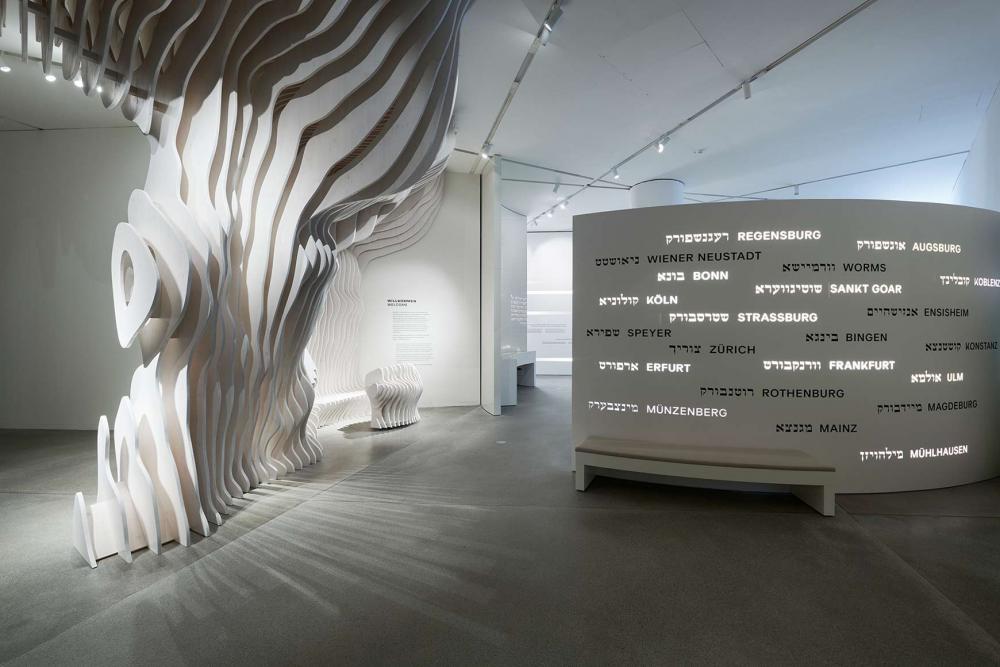
At the entrance to the new core exhibition of the Jewish Museum Berlin is the Welcome Point—a wooden sculpture modeled after a tree; Jewish Museum Berlin, photo: Yves Sucksdorff.
Download (ZIP / 898.82 KB / in English)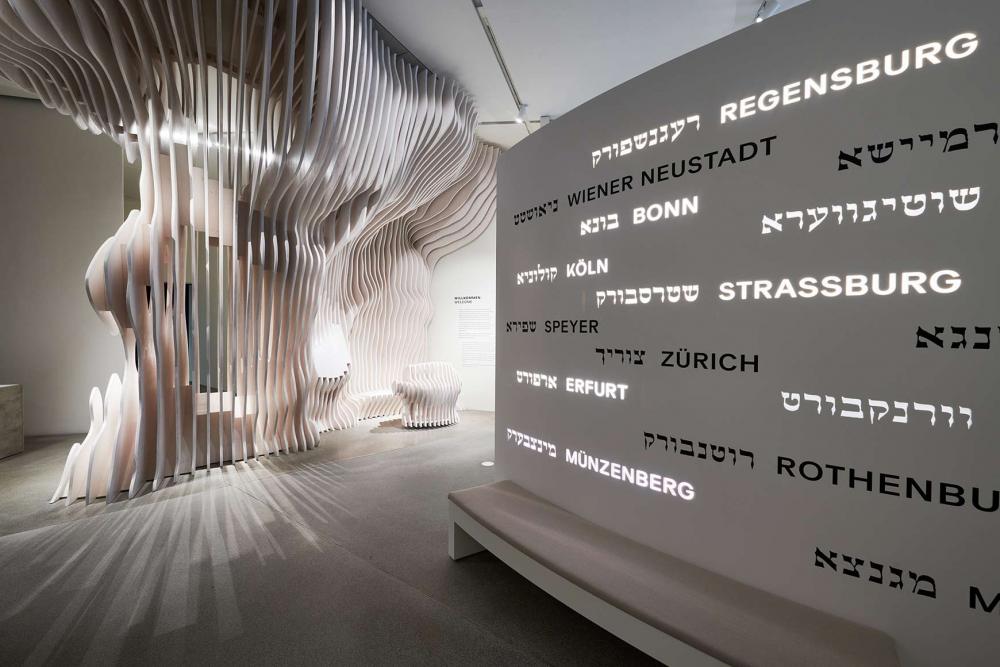
At the entrance to the new core exhibition of the Jewish Museum Berlin is the Welcome Point—a wooden sculpture modeled after a tree; Jewish Museum Berlin, photo: Yves Sucksdorff.
Download (ZIP / 959.86 KB / in English)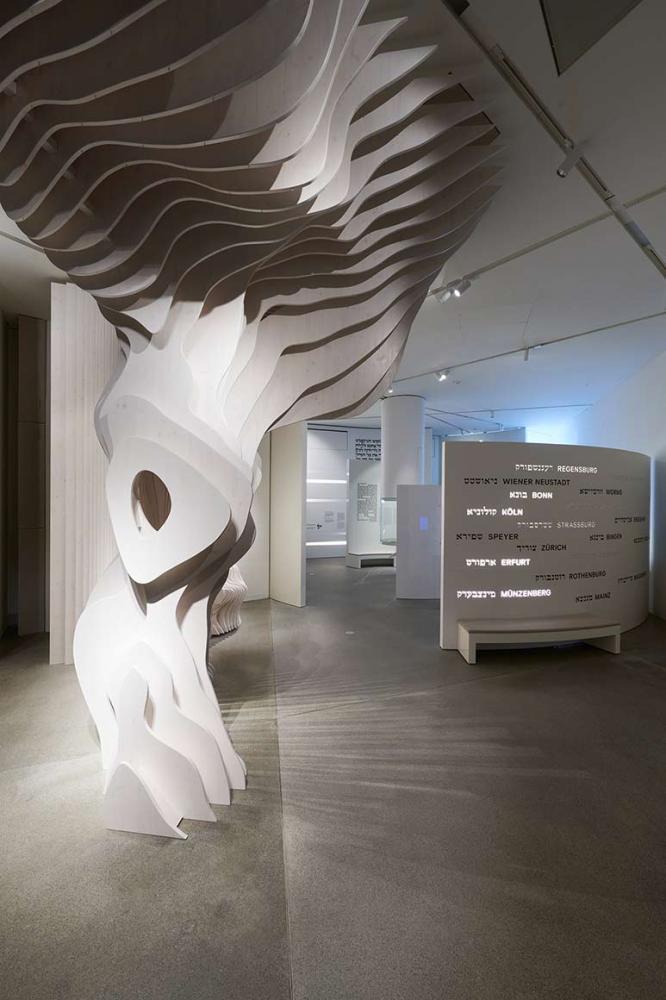
At the entrance to the new core exhibition of the Jewish Museum Berlin is the Welcome Point—a wooden sculpture modeled after a tree; Jewish Museum Berlin, photo: Yves Sucksdorff.
Download (ZIP / 728.54 KB / in English)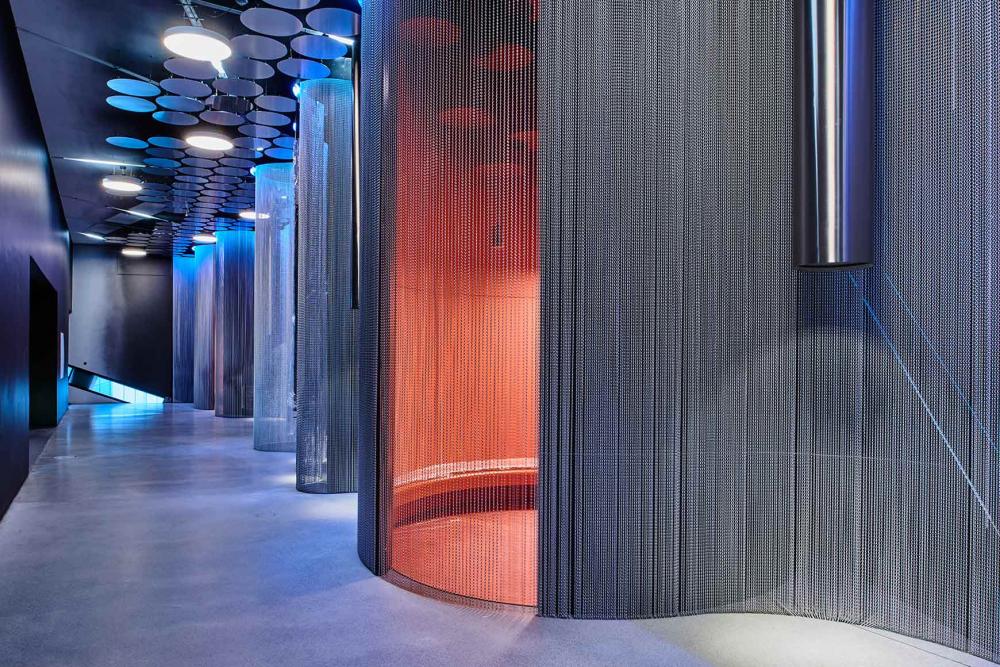
What is Jewish music? View of the Music Room, one of the eight theme rooms of the Jewish Museum Berlin’s new core exhibition; Jewish Museum Berlin, photo: Yves Sucksdorff.
Download (ZIP / 1.09 MB / in English)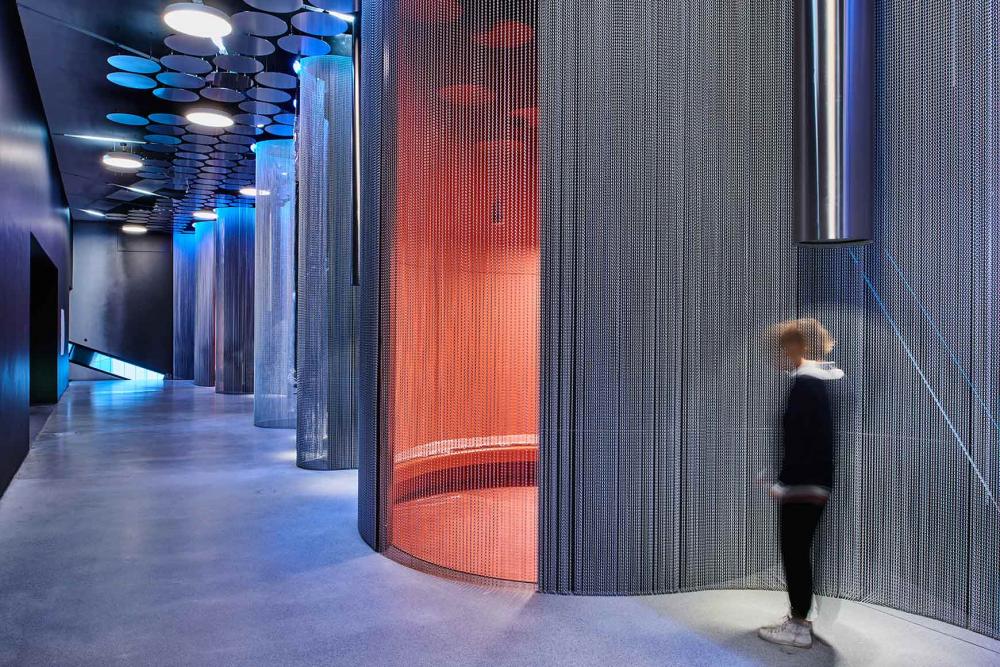
What is Jewish music? View of the Music Room, one of the eight theme rooms of the Jewish Museum Berlin’s new core exhibition; Jewish Museum Berlin, photo: Yves Sucksdorff.
Download (ZIP / 1.05 MB / in English)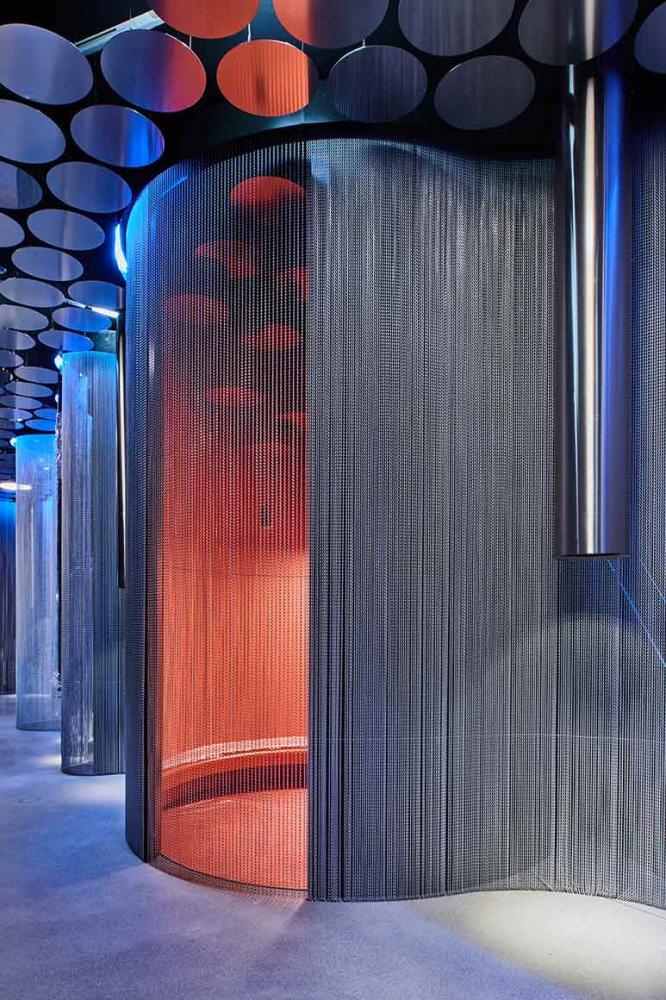
What is Jewish music? View of the Music Room, one of the eight theme rooms of the Jewish Museum Berlin’s new core exhibition; Jewish Museum Berlin, photo: Yves Sucksdorff.
Download (ZIP / 1.04 MB / in English)
Bowing to a number of Jewish personalities in the Hall of Fame of the Jewish Museum Berlin’s new core exhibition (illustrations: Andree Volkmann); Jewish Museum Berlin, photo: Yves Sucksdorff
Download (ZIP / 983.63 KB / in English)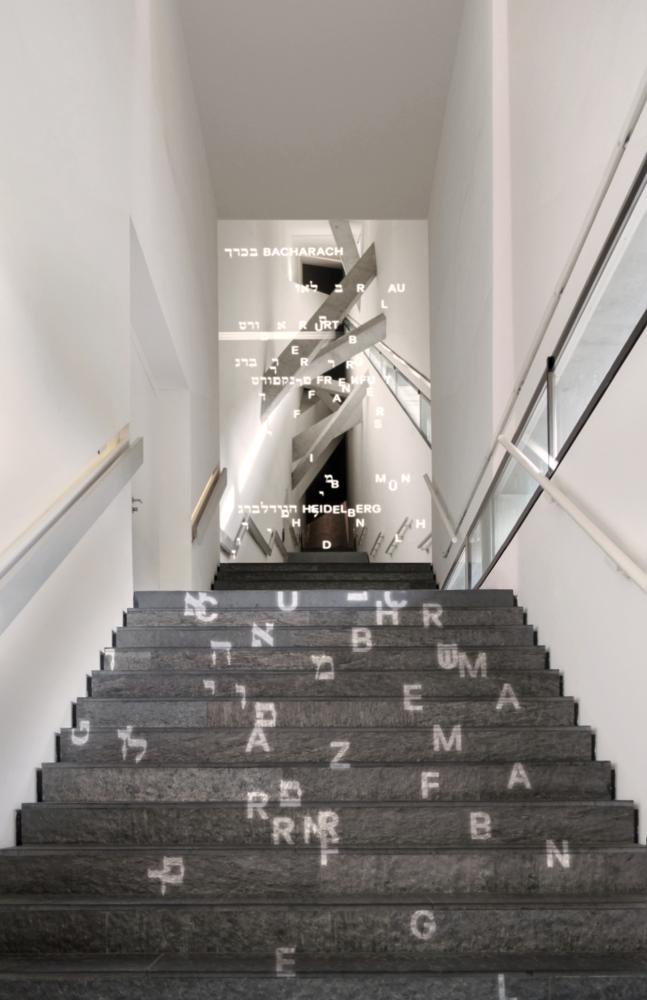
Light projection on the stairs to the core exhibition; design: Arbeitsgemeinschaft Chezweitz GmbH/Hella Rolfes Architekten BDA
Download (ZIP / 1.11 MB / in English)
